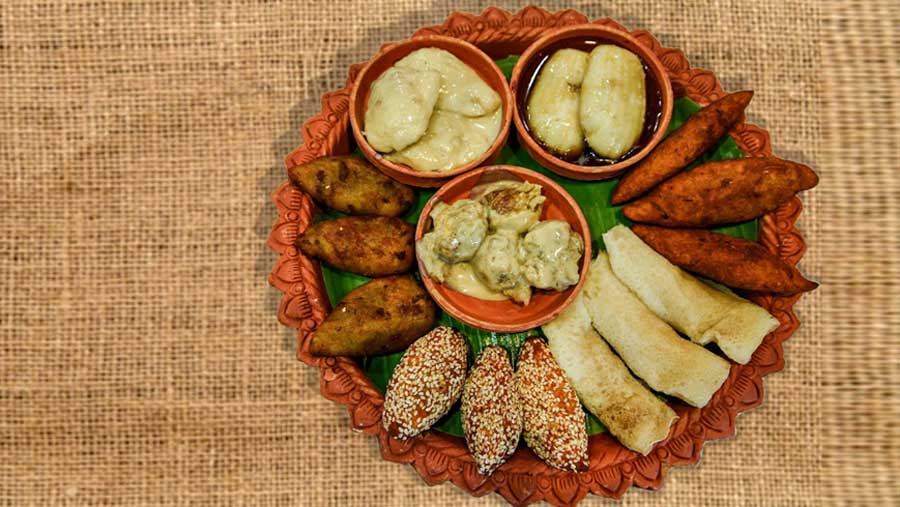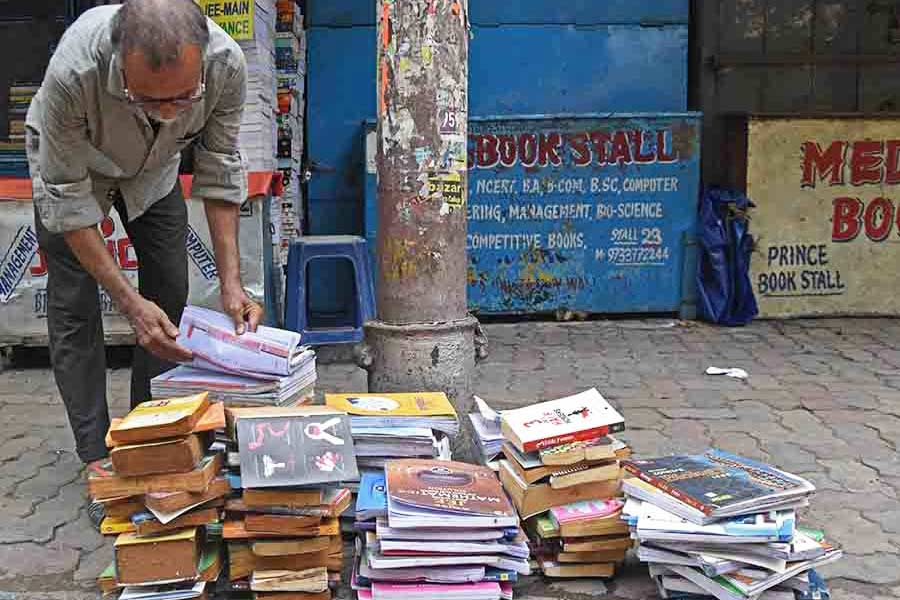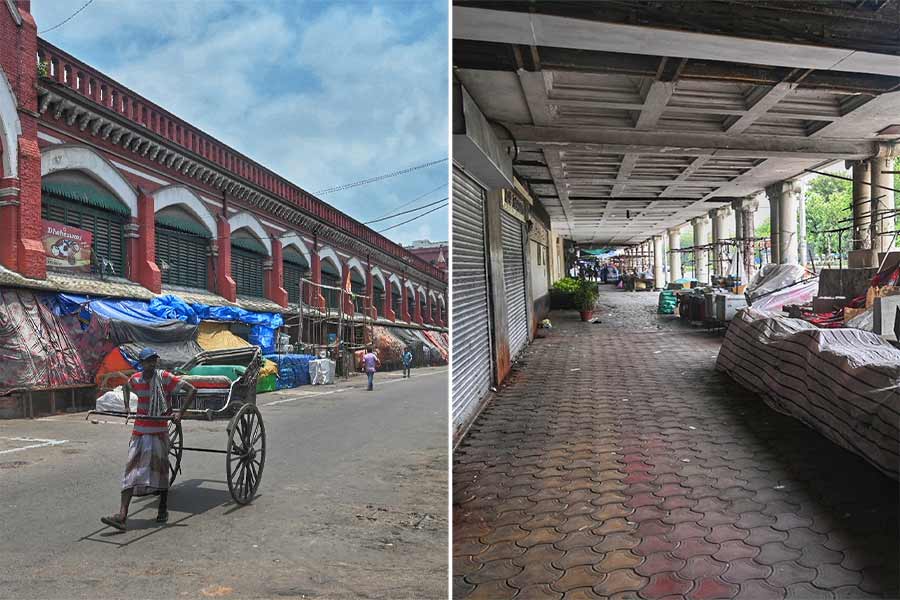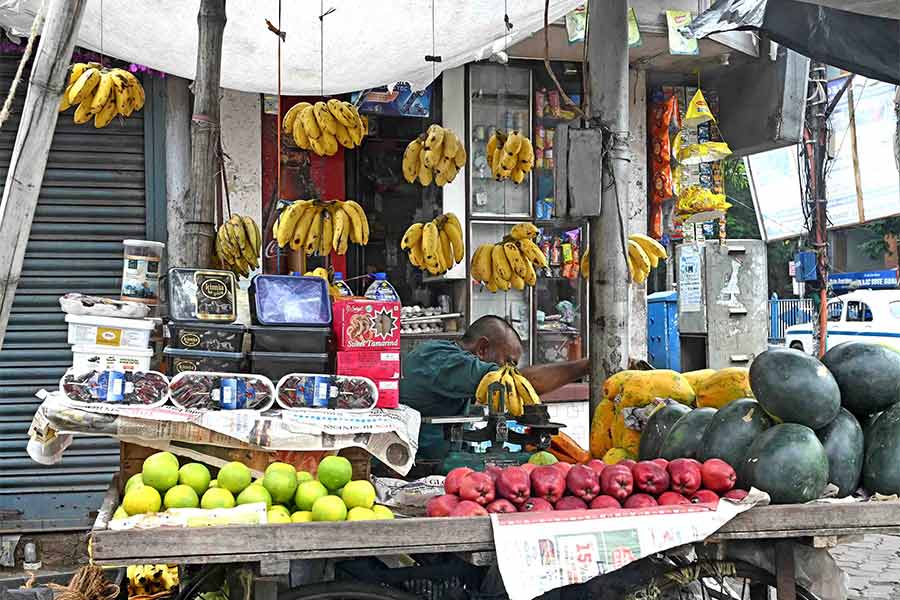Dear Moni,
How are you? It has been very cold here in the past few days. This year winter just rushed in like an express train with the onset of the month of Poush. Didn’t even give me time to sun my quilts and blankets. Sometimes, I am not sure if it is the cold that is more brutal this year or it is my old bones which cannot stand the icy wind any more. At night, I cover myself with two thick quilts and the soft blanket that you sent me and yet I shiver as if there is ice in my blood.
How I miss the winter of my youth. It used to be the best time of the year, you know. We would wear our heavy south silks, wrap colourful batik scarves around our neck, cardigans knitted in the latest fashion and make most of the Kolkata winter. It was the time to enjoy the crisp outdoors. Picnic at the zoo, Christmas at Park Street, cake from Flurys, stroll through Hogg Market which would have the most colourful wares on display – ah, those were the days.
Even the local haat would be dressed up, strutting their prettiest and fairest vegetables as if it was a veggie fashion show. All kinds of leafy greens, shiny green cabbages, ruby red beetroot, slender orange carrots, fat snap peas with their emerald-like peas snuggled inside, purple eggplants with skin so silky that sunlight would slide off them. You know what was the best part of Poush? Khejur gur, date palm jaggery! The cold weather would trigger the palm tree to make its sap, which would be harvested fresh early in the morning by village folks. That sap was then stirred and thickened to make khejur gur, the nectar of the gods. Aha! What a taste it had! What fragrance! The whole house would be redolent with the sweet fragrance of gur on the days I made paayesh. The khejur gur they sell in Kolkata these days is all fake, no flavour, no taste, no nothing! I think they make it in a factory with chemicals.

Khejur gur or date palm jaggery
Courtesy: Amit DattaSo anyway, what was I telling you in my last letter? Did I tell you that Rajat was in London and I had not heard at all from him since then? I could not have been happier with this arrangement, actually. It looked like God had heard my prayers finally.
Then that Poush Sankranti, his parents came to our house. It was a sudden and unexpected visit. My mother had just finished frying the last batch of her famous gokul pithe and was in the kitchen sorting them to be distributed to our friends and neighbours. I can still see her, sitting on a low wooden stool, her fair skin glowing pink from the fire, her fingers quick and deft, rolling small discs of dough, stuffing them with kheer, patting them to flat discs and then frying them in hot oil. She then quickly dunked them in a sugar syrup she had ready in a humongous brass dekchi. Those gokul pithes were so delicious, one bite of the thin exterior cover and you would be treated with the creamy kheer interior. She had fried the last of the pithe when the doorbell rang.
…
Gokul Pithe
Pitha or pithe are a special variety of rice cakes associated with the harvest festival of Makar Sankranti or Poush Parbon, celebrated in Bengal. Though the primary ingredients are rice, coconut and jaggery, pithe is also often made of wheat flour like the gokul pithe. It is a fried pithe, made of wheat flour and a sweet coconut kheer stuffing and then fried and soaked in hot sugar syrup. This recipe makes 25-30 gokul pithe.

A platter of pithe
Courtesy: Amit DattaIngredients
For Stuffing
Grated coconut – 2 cups
Khoya – 12oz almost 2 cups (ideally homemade khoya/kheer is best but store-bought khoya works fine)
Sugar – 1 cup
For Batter
All-purpose flour – 2 cups
Ghee – 1 tsp
Baking soda – ¼ tsp
Whole milk – 1 cup
Saffron – a pinch
For Syrup
Sugar – 4 cups
Water – 4 cups
For Frying
Vegetable oil
Making the Stuffing
Heat a kadhai or frying pan.
Add coconut and sugar and lower the heat.
Mix the grated coconut with the sugar lightly pressing with your fingers till the sugar melts and mixes with the coconut.
Add the khoya. Keep stirring till the mixture becomes light brown and sticky. It should easily come off from the sides. At this point, take a little bit of the mix and see if you can fashion a flat disc out of it. If it is too sticky you may have to cook it a bit more, else you are good.
Take a little of the mix, roll a small ball between your palms and then flatten between your palms to make a disc about 2" in diameter and thickness of a ½". Make about 25-30 discs of this size.
Making the Batter
In a wide-mouthed bowl add:
• All-purpose flour
• Ghee
• Baking soda
Mix it lightly.
Now add a cup of whole milk and a cup of water. Mix scraping the sides to form a batter. You will need about one more cup of water but add this gradually till you get a batter thick enough like a pakoda batter.
To this batter add a generous pinch of saffron.
Making the Syrup
Boil 4 cups of water and 4 cups of sugar till you get a syrup of one-string consistency.
Add a few drops of kewra or rose water to the syrup to get a sweet smell.
Frying
Heat enough oil for deep frying in a skillet.
Dip the coconut-khoya discs in the batter so that they are well coated. Now fry them in the hot oil like a fritter. Remove with a slotted spoon when both sides are golden brown. Dunk in the syrup and remove when they become a little soft.
In one version of gokul pithe you can make the sugar syrup thicker and then coat the fried pithe with the syrup instead of soaking them in it.
Enjoy!
The text has been excerpted from A Taste of Time: A Food History of Calcutta by Sandeepa Datta Mukherjee, published by HarperCollins India, August 2020.






